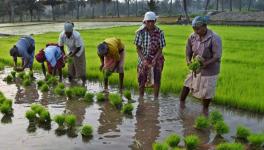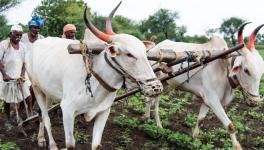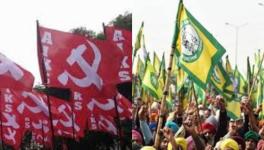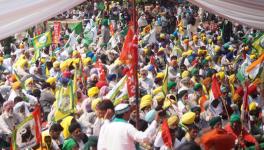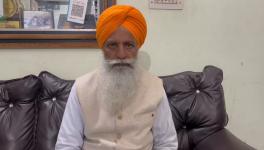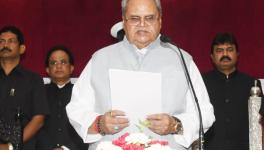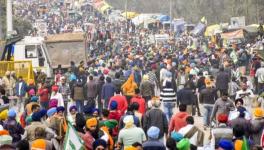‘No Money for MSP’, Huge Allocation Cuts Amid India’s Worst Agrarian Crisis: Nabard Employees Union
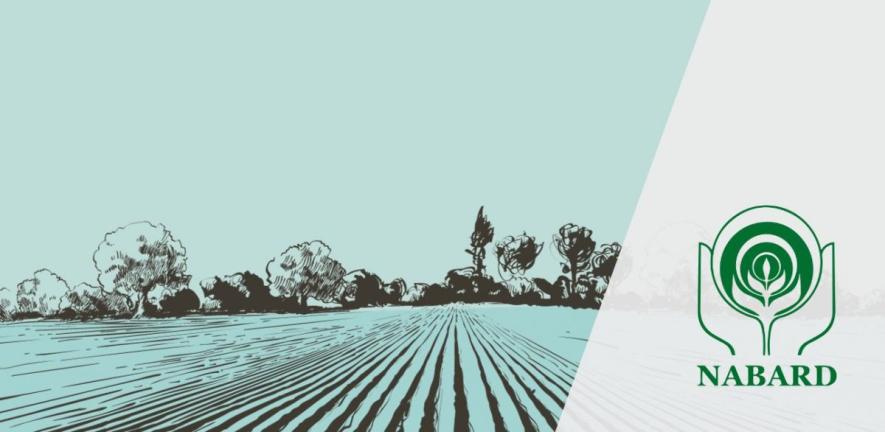
Representational Image
The All India National Bank for Agriculture and Rural Development Employees Association has highlighted the ‘dire crisis’ that the agricultural and allied sectors are facing amidst the continuing farmers’ protest for a legally guaranteed minimum support price on agricultural produce.
—
Amidst the farmers’ protests, the All India National Bank for Agriculture and Rural Development Employees Association (AINBEA) has highlighted a larger crisis looming over agriculture and its allied sectors, especially its principal stakeholder farmers.
In its recent approach paper released on February 21, 2024, AINBEA asserts that the Union interim budget 2024–25 is actually “anti-farmer” and “anti-agri” but has been represented as “pro-farmer” and “pro-growth”.
In the paper, AINBEA further asserts that instead of allocating more funds to agriculture and allied sectors, farmers’ welfare and institutions such as the National Bank for Agriculture and Rural Development (NABARD), the government has significantly curtailed budgetary support as compared to the last two years.
NABARD is India’s top-most development bank. It was established in 1982 to promote sustainable and equitable agriculture and rural development.
No allocation for minimum support price
In its approach paper, AINBEA has said that the budgetary allocation of agriculture and allied activities in 2024–25 has been reduced by “a whopping ₹81,000 crore” from the actual spending in 2022–23.
This, AINBEA points out, is a decline of 22.3 percent compared to the actual expenditure in 2022–23 and a 6 percent decline vis-à-vis the 2023–24 revised budget.
Most importantly, the paper claims that the government has not allocated any money in the interim budget to ensure that the long-standing demand of the farmers for a ‘minimum support price’ could be met.
Since February 13, farmers from Punjab and Haryana have been protesting on the Punjab–Haryana and Delhi borders, asking for 13 demands to be fulfilled, including debt waiver and a legally guaranteed minimum support price (MSP) on agricultural produce.
One of the demands of the farmers is the implementation of the recommendations of the 2004 Dr M.S. Swaminathan Commission which include a provision for MSP as per C2+50 percent. This formula suggests that MSP should be at least 50 percent more than the weighted average cost of production.
Interestingly, at the time when the commission was constituted, it had Y.C. Nanda, the then chairman of NABARD, as one of its members. The commission was also known as the National Farmers Commission.
AINBE’s approach paper also quotes another set of data showing that the allocation for food subsidy is ₹67,552 crore less than the actual expenditure in 2022–23.
Lastly, the approach paper mentions that the allocation for fertiliser subsidy in 2024–25 is ₹87,339 crore less than the actual expenditure in 2022–23.
Rural India faces the worst-ever crisis
In its approach paper, AINBEA highlights the data on declining consumption expenditure in rural areas coupled with declining average rural wages to establish the dire condition of the rural agricultural economy.
The paper states that the government claims 25 crore people have been lifted out of poverty and that the economy is bouncing back to normalcy post the Covid pandemic when in reality, the government’s own data shows that the country is going through the worst rural distress.
The paper asserts that there has been a deliberate attempt to mask data on poverty since 2011–12.
It refers to the data on rural real wages from the labour bureau and states that compared with the level of real wages in May 2014, non-farm wages have declined by 0.4 percent per annum with agricultural wages rising at a measly 0.5 percent per annum.
AINBEA further remarks that the real wages of regular workers, the backbone of the middle class, have declined since 2011–12. Real earnings of regular workers in the rural areas declined at 0.3 percent per annum between 2011–12 and 2017–18.
For urban workers, real wages declined faster, at 1.7 percent per annum. The trend of declining wages continues even today.
Further, between 2017–18 and 2022–23, the real wages of regular workers in rural areas declined by 0.5 percent per year, whereas real wages of urban regular workers stagnated during the same period, AINBEA points out.
AINBEA asserts that this counters the growing “false campaign” about India becoming an economic superpower.
AINBEA points out that the data on reverse migration is also distressing. It states that there has been a reverse migration of 42 million workers between 2017–18 and 2022–23 from urban areas to the agriculture and rural sectors due to the pandemic, demonetisation and faulty implementation of goods and services taxes (GST).
The implementation of GST, in particular, has resulted in the closure of lakhs of small and medium enterprises, AINBEA asserts.
Concerns over growing urbanisation of agri-credit
Another growing concern highlighted by the AINBEA in its approach paper is the over-reliance on commercial banks and the ignorance of the cooperative sector in the overall disbursement of agri-credit.
For instance— AINBEA points out— while the institutional credit flow to agriculture and allied sectors was 14.8 percent during 2019–23, the share of the cooperative sector was 12 percent overall.
For agri-credit, commercial banks had a total disbursement of ₹16.1 lakh crore, followed by regional rural banks with a disbursement of ₹3 lakh crore.
However, the share of cooperatives in the ground-level credit in agriculture has come down to 12 percent in 2022–23, from 62 percent in 1992–93.
Notably, the Swaminatham Commission had made recommendations for expanding the formal credit system to reach the poor and needy.
It also recommended that the rate of interest for crop loans should be reduced to 4 percent, with government support.
Another problem pointed out by AINBEA is that before 2015, there were sub-limits for direct and indirect lending to agriculture. For direct credit, the sub-limit was 13.5 percent and for indirect lending, the sub-limit was 4.5 percent.
From 2015 onwards, the Reserve Bank of India has merged these two segments of agri-credit.
AINBEA says that this makes it easier for banks to achieve an overall 18 percent sub-target for agriculture within the 40 percent target for priority-sector lending. This is because many banks, especially private ones, easily achieve this target by giving big loads to giant corporations while showing that these are agricultural loans.
Overall, there is a lack of agri-credit spaces especially in states such as West Bengal, Assam and Jharkhand by deliberately weakening cooperatives that have now been taken over by micro-finance institutions, AINBEA asserts.
It remarks that the institutions are armed with the removal of interest caps by the Reserve Bank of India that has resulted in fleecing of poor villages, farmers and women borrowers in particular. This has resulted in multiple suicides among poor borrowers.
The approach paper concludes that in the current situation, India’s agricultural economy faces serious challenges, especially NABARD, whose mandate was to uplift the rural economy.
Gursimran Kaur Bakshi is a staff writer at The Leaflet
Get the latest reports & analysis with people's perspective on Protests, movements & deep analytical videos, discussions of the current affairs in your Telegram app. Subscribe to NewsClick's Telegram channel & get Real-Time updates on stories, as they get published on our website.










